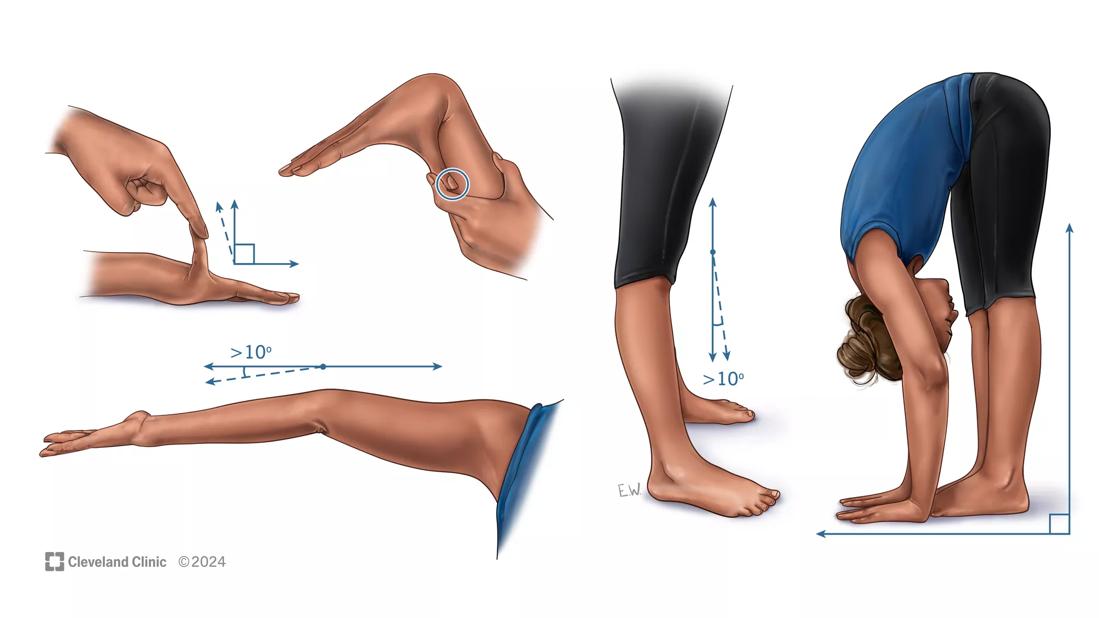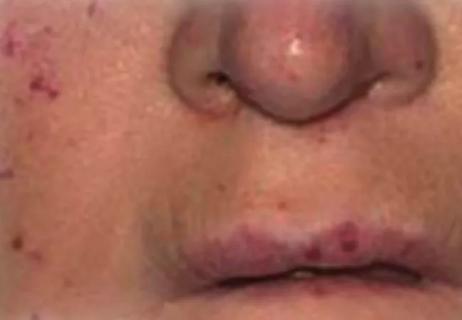Experienced clinicians can bridge traditional care gap

by Adam Brown, MD
Joint hypermobility is the feature most associated with Ehlers-Danlos Syndrome (EDS), but being “bendy” doesn’t always spur patients or their physicians to investigate EDS. The collagen synthesis abnormalities of EDS can lead to other conditions as well – skin hyperelasticity and damage to ligaments, blood vessels and the heart.
Advertisement
Cleveland Clinic is a non-profit academic medical center. Advertising on our site helps support our mission. We do not endorse non-Cleveland Clinic products or services. Policy
Identifying EDS is a necessary first step for optimizing patient outcomes.
Ehlers-Danlos Syndrome describes a group of 13 genetic connective-tissue disorders that affect an estimated 1 in 20,000 people. In addition to previously mentioned symptoms, EDS can lead to dislocations, stretchy and overly thin skin, bruising and scarring, chronic joint and muscle pain, fatigue and brain fog. Dysautonomia and stroke are among more serious complications.
While there are genetic factors – multiple individuals in families often exhibit hypermobility – genetic panels reveal no known mutation for about 80% of these patients. They are labeled hypermobile Ehlers-Danlos Syndrome based on meeting clinical criteria, including results of their Beighton screening test for hypermobility.
The next step is connecting patients with EDS-experienced rheumatologists and other specialists who can help them navigate challenges.
In 2019, Cleveland Clinic started a care program to give patients with EDS a medical home, where they can be assessed, educated about EDS and referred for physical therapy. The program also coordinates with orthopaedic surgery, cardiology, physical therapy, gastroenterology, neurology and vascular medicine so patients can more easily have their EDS-associated conditions addressed by specialists who understand the syndromes.
Since starting the EDS program at Cleveland Clinic, we have helped hundreds of patients get the coordinated care they need to manage their chronic condition. Our services include:
Advertisement
One of the biggest benefits we offer patients in our EDS program is connecting the dots when symptoms develop. Understanding the complexities of the syndrome allows us to keep them from bouncing from specialist to specialist in search of answers.
In addition to treating physiological conditions associated with EDS, we understand the importance of helping patients manage social and psychological effects.
This year we will begin offering shared medical appointments (SMAs) that will enable us to educate newly diagnosed patients efficiently and effectively while connecting them to others with similar experiences.
Some patients have experienced a variety of complications related to EDS but either were never diagnosed or they received care from clinicians lacking EDS expertise. Being listened to and understood brings them an immediate sense of relief.
One of the most important things we do is let them know that their experiences are not all in their head. In some cases, they have been told there's nothing wrong with them. We are able to validate their experiences and offer tools to help them manage and to offer hope that they can feel better.
Cleveland Clinic’s Ehlers-Danlos program has been developed with funding support from the family of the late Sophie Herschman, who received care for her EDS at Cleveland Clinic. Click here to learn more about her and the gift that grew out of her EDS experience.
Advertisement
Advertisement

Phenotypic clustering study reveals four distinct disease trajectories

Rare genetic disorder prevents bone mineralization

Oral medication reduces epistaxis and improves quality of life for patients with rare vascular disorder

A recently published case series highlights the broad range of laryngeal findings that can present among individuals with EDS

The disorder can greatly impact patients’ quality of life, but sclerotherapy and a multidisciplinary approach to care can be life-changing

National database study reveals insights into survival outcomes

Clinical complexity demands personalized care strategies

Treatment insights from the ninth recorded EMPD case in 50 years